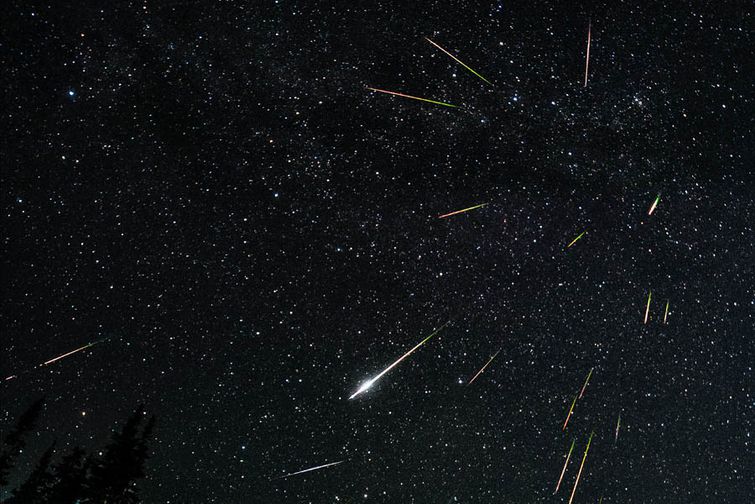The Perseid meteor shower continues Thursday night. Here's how to watch it.
Updated by Joseph Stromberg on August 13, 2015, 9:02 a.m. ET, Source
The Perseid meteor shower — the most active meteor shower of the year — peaked Wednesday night. But if you missed it, you should still be able to see some meteors Thursday night, with diminishing numbers each of the next few nights too.
As Earth plows through a trail of dust and rock left behind by the comet Swift-Tuttle, tiny pieces of debris will enter our atmosphere and burn up, producing dazzling shooting stars. Starting around 10 pm local time (regardless of your time zone) on Thursday, you'll be able to see dozens of these per hour — with the show aided by the low amount of light coming from the barely visible crescent moon.
Still, this works out to less than a meteor per minute, so don't go outside with the expectation of seeing one immediately. The best way to see the shower is to find a relatively dark area, lie down on the ground or take a seat, let your eyes adjust, and take in the wonder that is our planet passing through a cloud of burning cosmic dust.
How comet dust causes a meteor shower
Comets are balls of ice and rock. Like Earth, they orbit the sun — but unlike Earth, their orbits are extremely elliptical, so at times they're at the outer reaches of the solar system, and at others they pass right by the sun.
As the comet Swift-Tuttle nears the sun every 133 years, heat causes it to vaporize, leaving behind a trail of dust and other small pieces of debris. Every August, Earth passes through the region of space that contains this debris. That's what creates the Perseid meteor shower.
The comet debris doesn't pose any threat to us: The pieces range in size from a grain of sand to a pea, far too small to make it through our atmosphere. As Sky & Telescope puts it, "The nuggets in Grape Nuts cereal are a close match to the estimated size, color, and texture of typical meteor-shower particles."
But as they burn up in Earth's atmosphere at speeds of around 133,000 miles per hour, the streaks of burning debris and superheated air generate beautiful shooting stars, visible to the naked eye.
What might be most amazing about all this is that while some of the debris was left behind on Swift-Tuttle's most recent pass of the sun, in 1992, other grains came from the prior couple of passes, in 1859 and 1726. In other words, some of the meteors you see Wednesday night are pieces of a comet that flaked off centuries ago and have been drifting in space ever since.
How to see the Perseid meteor shower
Astronomers predict the meteor shower already peaked Wednesday night/early Thursday morning, but some meteors will still be visible for the next few nights too, with the frequency diminishing as the week goes on.
Each night, meteors should become visible around 10 pm, local time, for people in the Northern Hemisphere, with the most active part of the show between 3 a.m. and dawn. (Viewers in the Southern Hemisphere will also be able to see some meteors, but only about a third as much.) Luckily, forecasts currently predict fairly clear skies Thursday and Friday night for most of the US.
You won't need binoculars or a telescope to see the meteors. Just head outside, find a spot with a view of open sky, and look toward the northeast, to the constellations Cassiopeia and Perseus. Over the course of the evening they'll gradually move higher in the sky, and the meteors will continue to come from their general area.
The darker it is, the more meteors you'll be able to see, so rural areas are much better than cities. That being said, even within a developed area, just getting away from bright streetlights will help you see the meteors much better.
The relative lack of moonlight is a big bonus, and the Perseids produce more bright meteors — which outshine light pollution and stars — than any other annual meteor shower. If you can see the stars of the Big Dipper, says astronomer Tyler Nordgren, you'll probably be able to see most of the meteors.
Still, it's not like you'll be able to just head outside and see a meteor right away — on average, there will be a meteor or two per minute at most. They often come in spurts of several close together, and fly by at speeds of several miles per second, so they can easily be missed. It also takes up to 20 minutes for your eyes to fully adjust to the dark.
So you'll have to be patient. Sit or lie back and stare at the sky. Eventually, you should be able to see a pretty cool show of burning comet debris over the next few hours with the naked eye.

